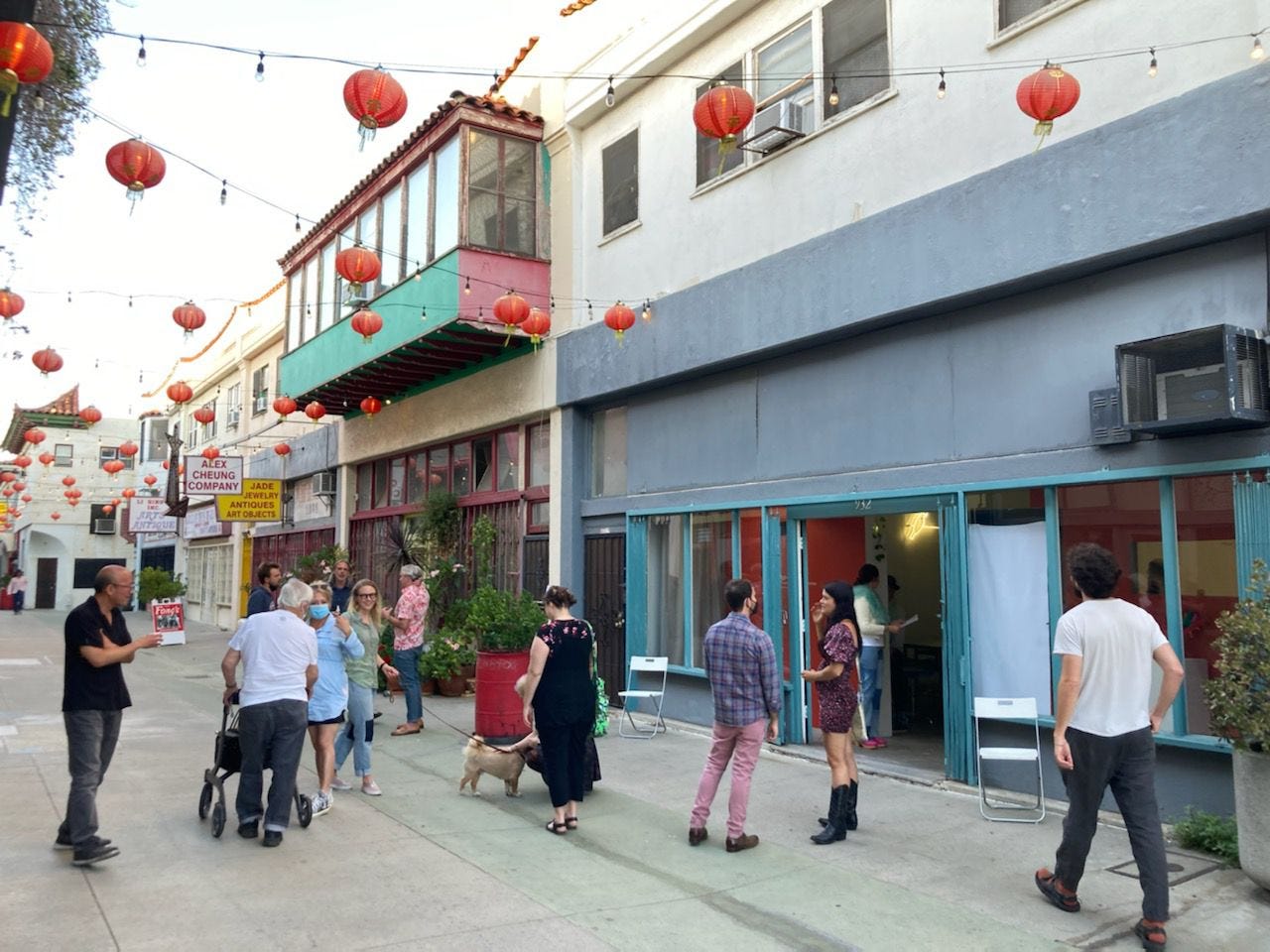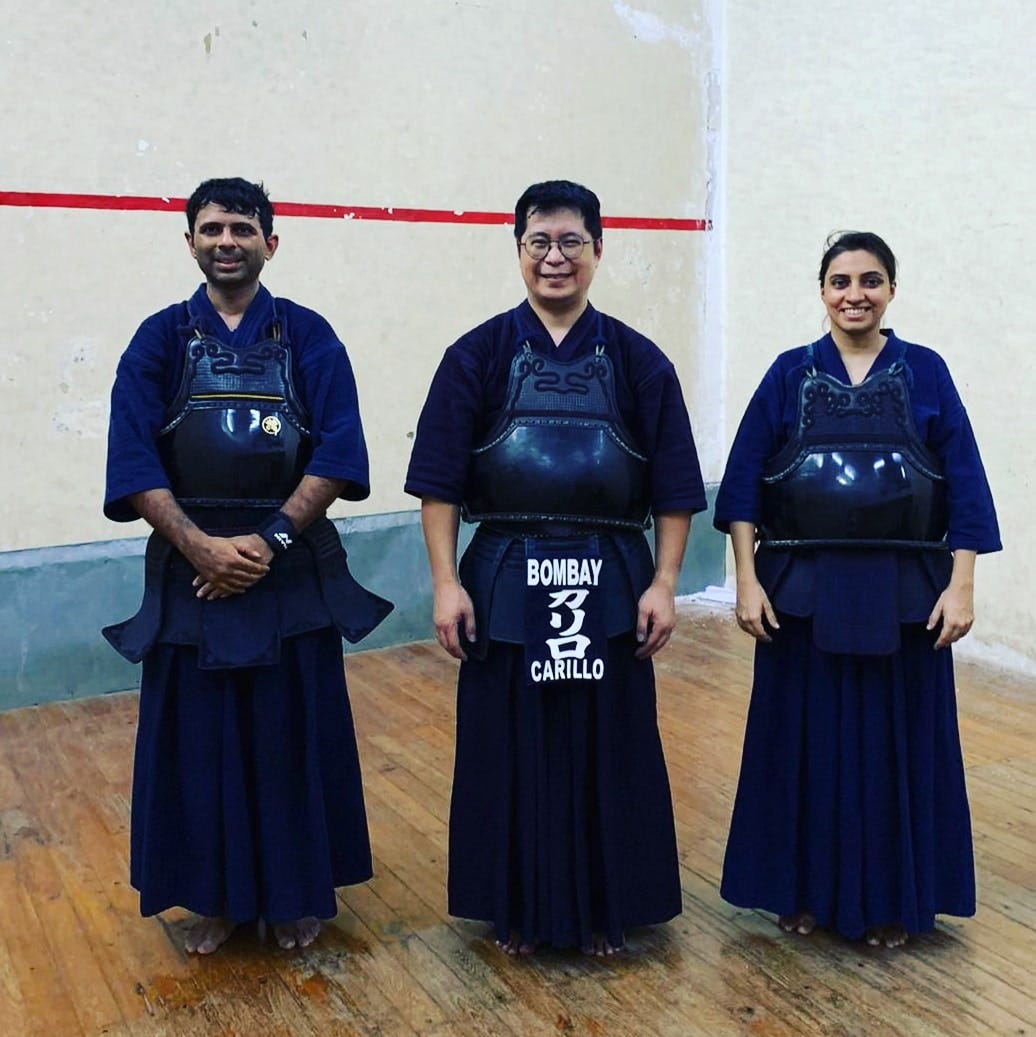Our first physical exhibition opened to an enthusiastic audience at the Institute of Art and Olfaction in Los Angeles, USA. In preparation for the exhibition launch, both Nicolas and I could not be physically present as curators, but that didn’t stop us from virtually mapping out every possible detail with IAO Director, Saskia Wilson-Brown. From helping us in selecting that exact terracotta colour for the window display, the exact shade of malachite and sandstone pink for the gallery walls, to the range of plants to possibly include, Saskia manifested our vision to the point that the IAO space was wholly transformed, radiating a warm sensual aura that visitors basked in. Photos of the Opening Night can be viewed in our new page “Bagh in the real world”. Pictured above is Los Angeles-based perfumer, Miss Layla, filling in the perfumes into the glass flacons that I shipped from Pune (all arrived intact!).
Apart from the incense and soap translations for each painting that the audience could smell, the perfumes were absolutely crucial to experiencing the art history. As this was our first physical exhibition, we commissioned Miss Layla to recreate all five perfume-translations of our paintings by sharing our list of original notes and ingredients, and then letting her take her own direction with them. My co-curator Nicolas received samples last week and was very pleased to experience how close each perfume came to my original fragrances. This is also why we decided to make our collaborative deliberations available to the audience as an offering of transparency. We lay out our methodology in each of our five chapters and I make available all the aroma chemicals and extracts I used in this process so audiences can run with it. It is worth emphasizing that such an open access approach is in fact a counter intuitive move within the context of an industry that values opacity and jargon — just like in the art and academic arena.
Another aspect of our audience-viewing experience was the information booklet. I wanted to keep visitors off their phones, so instead of considering QR codes next to each painting that would take the visitor to the information-site online, I wanted to lay emphasis on the offline. When Saskia sent us photos and videos of the opening, I squealed with excitement to see people reading our descriptive notes, then looking at the painting, then reading again! Also a first! We loved that visitors could get right up-close to the paintings, hi-res images printed to size, and really search for every detail, an experience so intimate, it is not possible within a museum. If you have comments about our rather DIY decolonisation project, feel free to get in touch, we LOVE answering questions!
Friend of Bagh, author James McHugh, went to see-smell our show and very sweetly sent us some photos of the Opening so we wouldn’t feel like we were missing out!

The sword is the equalizer
This June, Nicolas and I completed a year of collaborating together and it is a good time to pause and take stock of our accomplishments. As pioneering individuals in our respective fields and in partnership, we have accomplished a series of firsts. Infact, there is no precedent that we can truly model our collaboration on. For the critic who is a perfumer and the historian who is a gardener, both as artists, we are on our own, forging a path towards success and happiness as defined on our terms, outside of validation that any museum could grant us. For South Asian art history to be so triumphantly recontextualised with botany, smell, flavour, intellectual and material culture, all at once, is a first. To present that sensorial atmosphere on a virtual platform is an impossible first. Our manuscript outline-structure for Bagh as an immersive smell and pop up book —yet another first— is also ready.
Additionally, I have had to build our audience from the ground up through 2021-22. A day after our exhibition opened at IAO, I hosted two virtual curatorial walk-throughs for time-zones in Asia and Europe/USA — and I swear, we have hardcore fans from every field and corner of the globe who buy my perfumes and support our research. Yet, I have had to constantly evaluate questions that spike like a loose live wire in my brain:
What does it mean to build an open-access virtual museum with near-zero resources and funding; How do I continue to ensure every guest collaborator and contributor to my project is compensated as I do not accept free labour; Through what modes can one genuinely connect with audiences online; and, why am I sensing an odd silence from institutions around our original and spectacularly path-breaking intellectual labour even after we have sent enticing exhibition-proposals?
And then there is the soft plagiarism and lack of citation of our research in articles published only recently on the history of gardens and perfumery in South Asia, not to mention the grifting on social-media. Personally, I can’t help but feel like I’m being ghosted or erased outright, because I know from a decade of existing on the margins of the art world as a critic, that not being offered tangible visibility, opportunity and money, is a conscious choice people in positions of power make. Author bell hooks articulated this fact-feeling I already possessed in my bones:
I say to my students: Decolonize. But there's also that price for decolonization. You're not gonna have the wealth. You're not gonna be getting your Genius award funded by the militaristic, imperialist MacArthur people. And I'm not saying anything negative about the people who receive those awards, but there is a price that comes with decentering, decolonizing, and part of what has to happen for us to be free is that we have to create our own standards of how to live. - Author bell hooks criticized Beyoncé at the New School in New York City on May 6, 2014

I know what is to come and I don’t fear it, I just want to be ready for it. So I take my feelings around concepts of power and agency and deploy them against my sparring opponent during my weekly Kendo classes. Another first: This week, after a year in training, I received my Bōgu (Japan-made protective armour and helmet).
Honestly, it sucked. The helmet induced claustrophobia and dizziness, not to mention the added heaviness. While the armour across my front dragged me downward, the shinai (sword) with its own weight, is meant to be lifted and wielded breezily.
However difficult it was to manoeuvre, I was encouraged to stay on my feet for over an hour without a break to get the swing of things. What cheered me up considerably was a sweet message the next day from my globally placed network of Indian and Japanese sensei(s): “You are the first Indian woman Kendoka in the world. History starts from you.” So, apart from being a pioneering critic-perfumer, I am also a trail-blazing Samurai — younger me who avidly watched the cartoon Samurai Jack (and was never the same after a trip to Japan in 1987) would be very thrilled indeed!
The first round of press around our IAO exhibition is out: Writer Aekta Kapoor of “eShe: The Female Gaze” interviewed me about the many contexts that have shaped my unusual path. I talked about growing up in Nigeria, emerging as a critic in Southeast Asia, evolving as a perfumer in South Asia and my love for science fiction that hasn’t changed since I was a kid watching the BBC in the 80s! (Click on the image above to access the article)






